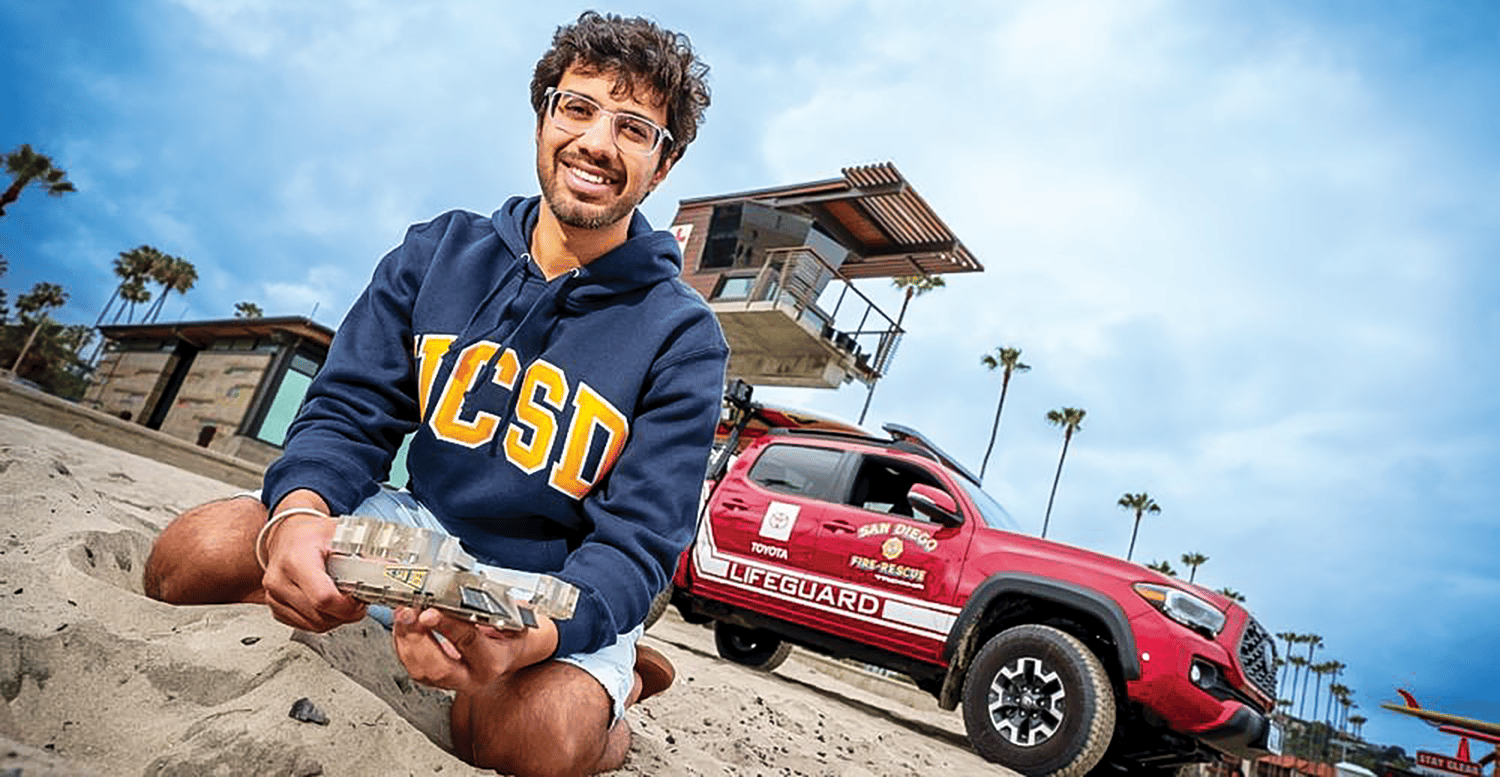
news & trends
IN THE NEWS:
o
C&GM INDUSTRY NEWS:
Gaining a second wind—recycled automotive glass hits the road again in new windshields
The Greentech Festival in Europe offers a prime platform for companies to publicize their advances in sustainability efforts. This year’s event, held in June 2023, was no exception—the Audi Group used the festival to announce the success of its “GlassLoop” pilot project, which explored the potential of recycling defective automobile glass back into new windshields.
There are stringent quality requirements for glass used in automotive applications to ensure safety. As such, companies traditionally prefer to make these products from raw materials rather than risk using recycled materials that may be of lower quality.
Because of this preference for raw materials, car windows that are damaged beyond repair—mainly windshields and panoramic roofs—have to date been reused for less demanding purposes, such as bottles or insulation.
The GlassLoop project aimed to determine if this assumption about raw versus recycled materials was unnecessarily closing off a viable reuse route for defective automobile glass. For the one-year project, which began in January 2022, the Audi Group partnered with Reiling Glas Recycling (Harsewinkel, Germany), Saint-Gobain Glass (Herzogenrath, Germany), and Saint-Gobain Sekurit. An April 2022 Audi press release stated that the companies aimed to process about 40 tons of recycled car glass using the following steps.
- At selected dealerships in the Volkswagen Group’s retail network, customers’ damaged windshields are evaluated to determine if they can be repaired.
- If repair is not possible, the windshields are delivered to Volkswagen’s Original Teile Logistik GmbH & Co. KG, which organizes the dis posal of unneeded parts. Service partners then remove the windshields for recycling.
- After removal, the damaged windshields are delivered to Reiling Glas Recycling, where they are first broken into small pieces. Non-glass materials such as plastic (polyvinyl butyral), window edgings, metals, and wires (heating filament and antenna cables) are then removed using magnets, non-ferrous metal separators, extraction units, and electro-optical sorting units.
- After these materials are removed, Saint-Gobain Glass separates the glass granulates based on source and color, which are then stored in bins. The granulate is then mixed with quartz sand, sodium carbonate, and chalk, with the recycled glass content ranging between 30–50%.
- The plate glass is processed into rectangles of about 3 x 6 meters (10 x 20 feet) each. It is then sent to a Saint-Gobain Sekurit plant, which adds glazing to the product.
In the project update announced at the Greentech Festival, the Audi Group confirmed that comparable quality could be achieved in glass containing up to 30% recycled content. The Audi Group and its partner companies now plan to shift this recycled glass into standard production as of September 2023, with production of windshields for the all-electric SUV Audi Q4 e-tron.
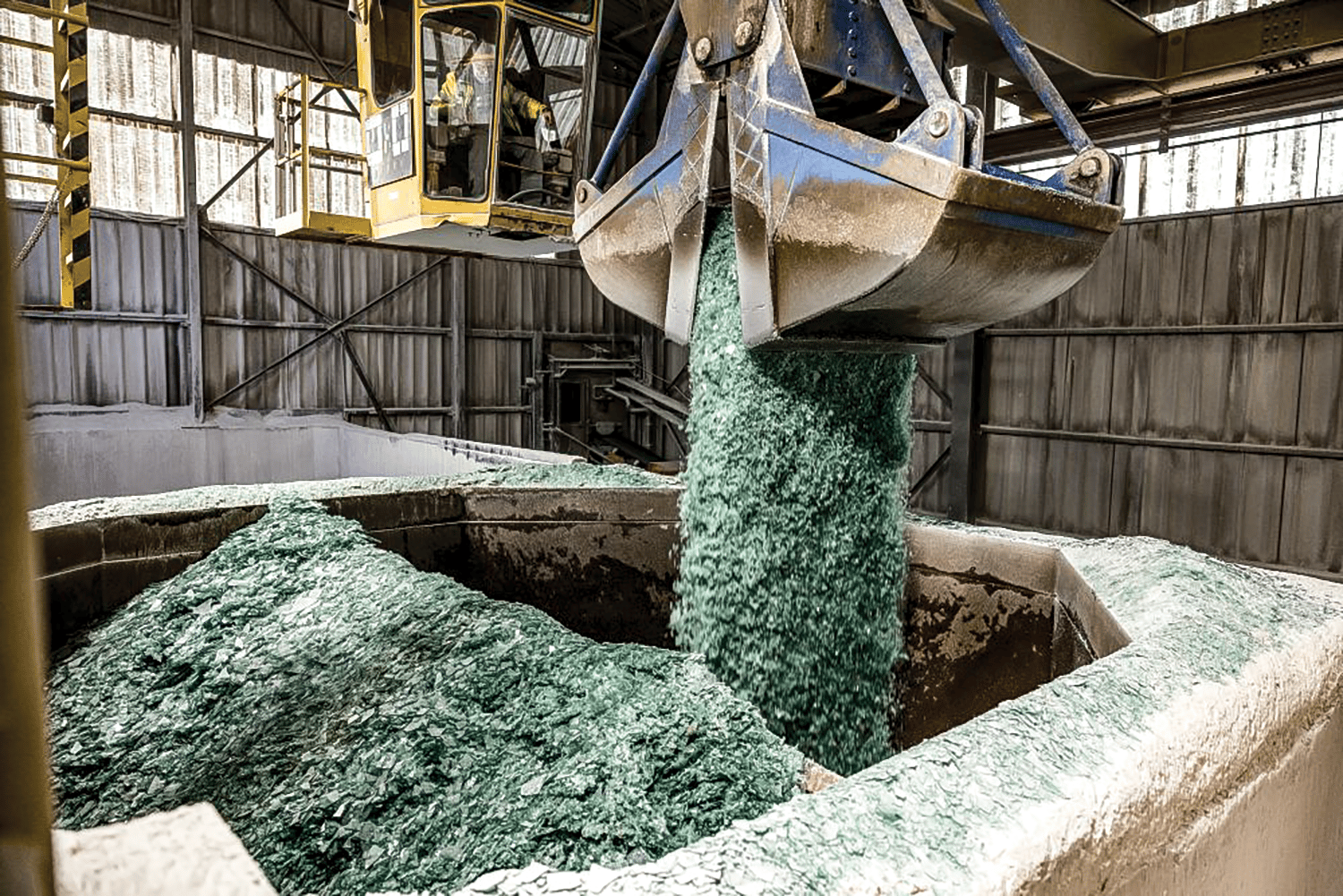
Delivery of glass recyclate during the GlassLoop pilot project, which explored the potential of recycling defective car glass back into new windshields.
Credit: The Audi Group

Delivery of glass recyclate during the GlassLoop pilot project, which explored the potential of recycling defective car glass back into new windshields.
Credit: The Audi Group

Delivery of glass recyclate during the GlassLoop pilot project, which explored the potential of recycling defective car glass back into new windshields.
Credit: The Audi Group
SiC chips make inroads in the automotive industry
Silicon is the traditional material used as the wafer in semiconductor chip fabrication. However, despite their ubiquity, silicon-based chips have some disadvantages. For example, silicon’s performance degrades badly at high temperatures. And as manufacturers have worked to place more transistors on each chip, considerable heat is generated.
This increased heat generation is especially troublesome for automakers. Chips placed in and around a car’s engine already experience high external temperatures. With the trend toward electric vehicle adoption, cars now have more semiconductor chips than ever before—meaning the need for cooling will be far greater.
For this reason, automakers are starting to embrace silicon carbide (SiC)-based chips for automotive applications. Compared to silicon, SiC has excellent thermal conductivity, which enables high-temperature operation with straightforward cooling control. SiC also has a much higher critical electric field strength, which allows it to withstand the higher voltages needed to enable fast battery charging times.
Toyota was an early adopter of SiC, developing and testing SiC power semiconductors for its hybrid vehicles back in 2014. However, Tesla was the first electric vehicle manufacturer to include SiC in its vehicles, with the adoption of a SiC main inverter for the Model 3 in 2017. Now, almost all automakers have expressed an interest in SiC, with companies such as BYD, Hyundai, and Kia choosing SiC modules for their new car models.
To prepare for an expected surge in demand for SiC electronics, several semiconductor manufacturers have announced plans to construct new or expand existing fabrication facilities. For example,
- February 2022: German multinational engineering and technology company Robert Bosch GmbH announced plans to further expand its wafer fabrication facility in Reutlingen, Germany. The expansion will primarily serve the growing demand for micro-electromechanical systems and SiC power semiconductors.
- September 2022: U.S. semiconductor manufacturer Wolfspeed announced it will build a new, state-of-the-art, multibillion-dollar materials manufacturing facility in Chatham County, N.C. The investment is targeted to generate a more than 10-fold increase from Wolfspeed’s current SiC production capacity on its Durham campus.
- February 2023: Wolfspeed and German global technology company ZF Friedrichshafen AG announced a partnership to create a joint R&D center in Germany to accelerate SiC innovation. The partnership also includes a significant investment by ZF to support Wolfspeed’s planned construction of a SiC device fabrication facility in Ensdorf, Germany.
- April 2023: Bosch announced plans to acquire U.S. chipmaker TSI Semiconductors. It plans to upgrade TSI’s existing manufacturing facilities in Roseville, Calif., so SiC chips can be produced there.
- August 2023: German semiconductor manufacturer Infineon Technologies AG announced it is expanding its factory in Kulim, Malaysia, to increase production of SiC powder modules.
There are challenges to scaling up SiC production, however. An interview with Wolfspeed senior vice president and general manager Cengiz Balkas, available here, summarizes some of these challenges and outlines several solutions.

A silicon carbide power semiconductor from German company Bosch. To prepare for an expected surge in demand for SiC electronics, several semiconductor manufacturers have announced plans to construct new or expand existing fabrication facilities.
Credit: Bosch

A silicon carbide power semiconductor from German company Bosch. To prepare for an expected surge in demand for SiC electronics, several semiconductor manufacturers have announced plans to construct new or expand existing fabrication facilities.
Credit: Bosch

A silicon carbide power semiconductor from German company Bosch. To prepare for an expected surge in demand for SiC electronics, several semiconductor manufacturers have announced plans to construct new or expand existing fabrication facilities.
Credit: Bosch
Collecting data in granular environments—turtle-inspired robot can swim untethered under the sand
The increasing demand for sand, similar to the demand for other critical material resources, is raising concerns about a global shortage. And though numerous studies have called for the development of a global sand governance strategy to address this imminent threat, little headway has been made.
This holdup is due in part to a lack of reliable methods to gauge, monitor, and compare the scale of sand extraction and consumption activities. Unlike water or air, robots cannot be easily deployed to gather data in a sandy environment. That is because movement through granular media, such as sand, presents numerous challenges. For example,
- Large resistive forces due to frictional resistance between sand grains,
- Nonzero yield stresses that cause unpredictable solid fluid transitions, and
- Extremely limited opportunities for sensing obstacles.
Research in the last 15 years on moving across or within granular environments has mostly focused on two basic approaches:
- robots that use peristaltic body expansion and elongation, like earthworms; and
- undulatory robots that use body bending to effectively “swim” in sand, like the sandfish lizard.
Robots based on the first approach face challenges to obtaining autonomous, untethered operation. Robots based on the second approach have successfully navigated shallow, low-density plastic beads, but the resistive forces are comparatively small compared to movement in sand; current actuators may not be able to generate motion in that case.

Shivam Chopra holds the robot he helped to develop as a Ph.D. student in the research group of Nicholas Gravish at the University of California, San Diego. This robot, inspired by turtle hatchlings, can move untethered through sand.
Credit: UC San Diego
Appendage-driven robots would have several advantages over these other approaches, including the ability to detect obstacles and generate large propulsive forces through a wide stroke. But they face a fundamental problem: due to the frictional resistance of sand (i.e., nonzero yield stress), an elastic appendage can get stuck in a deformed configuration if the elastic restoring stress is below the yield stress.
Fortunately, nature can serve as prime inspiration for many challenges that researchers face, and this situation is no exception. In a recent open-access paper, researchers from the University of California, San Diego, described how they developed an easily deployable, untethered, appendage-driven robot by observing the motion of sea turtle hatchlings.
After conducting extensive simulations and testing, the UC San Diego team selected a tapered body design and shovel-shaped nose. They also added two foil-like surfaces on the sides of the nose to keep the robot at level depth in the sand.
The robot, which was tested in both a lab tank and La Jolla Shores Beach, traveled at a speed of 1.2 millimeters per second—roughly 4 meters, or 13 feet, per hour. It was able to detect obstacles above its body by monitoring changes in the torque generated by the movement of its flippers, though not obstacles below or directly in front of it.
Next steps include exploring ways to increase the robot’s speed, such as by increasing the gait cycle frequency or making the appendages longer. The researchers also plan to modify the design so that the robot can burrow into and out of the sand, rather than being buried at its maximum depth of five inches.
The open-access paper, published in Advanced Intelligent Systems, is “Toward robotic sensing and swimming in granular environments using underactuated appendages” (DOI: 10.1002/aisy.202200404).
Training the next generation of builders—first large-scale construction 3D printer in the Buckeye State arrives at Ohio State
With housing shortages rampant in countries around the world—and with the houses that are available being unaffordable for many—the construction industry is considering alternative building materials and methods to make housing more affordable.
3D printing is one approach gaining steam in the construction industry. Compared to conventional construction methods, 3D-printing technologies allow companies to develop complex shapes while using less material. It also aids in less material wastage because failed prints can be reused as raw material in later printing stages.
Several companies have started making names for themselves in the 3D printing for construction space. To further expand the use of 3D printing in construction, however, will require training the next generation of builders on these techniques.
In January 2023, 3D-printing construction company Pantheon Innovative Builders delivered a construction-grade 3D printer to The Ohio State University’s Center for Design and Manufacturing Excellence (CDME) as part of a new partnership to train the next generation. The printer, which is the modular BOD2 printer from Denmark-based manufacturer COBOD International, is the first large-scale concrete construction printer in Ohio and one of fewer than 10 at universities worldwide.
The research partnership will include testing; print demonstrations; experimental learning for students; and the creation of a workforce development training curriculum, which can count as credit toward post-secondary or trade education. COBOD will provide on-site support with machine startup, training, and material development.
In a press release, Pantheon CEO Ryan Kelly says the company is “extremely excited” for this opportunity to work with CDME and COBOD.
“This partnership will help us create a model to reimagine, retrain and recruit the future construction workforce,” he says.
C&GM Industry News
LG Electronics grows its advanced materials business
LG Electronics’ advanced materials business is now using an in-house developed antimicrobial glass powder and marine glass, which the company says will help grow its new advanced materials business. The company’s antimicrobial glass powder is made at LG Smart Park in Changwon, Republic of Korea, which produces 4,500 tons of the material annually.
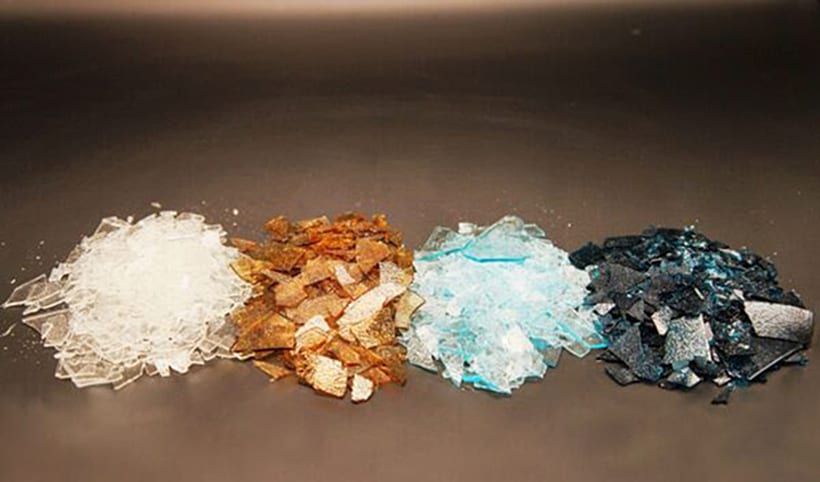
The antimicrobial glass powder was initially applied to LG ovens launched in North America in 2013.

Corning creates joint venture in India
Corning and SGD Pharma announced a joint venture to open a glass tubing facility in Telangana, India, to expand access to Corning’s Velocity Vial technology in India. The agreement combines SGD Pharma’s vial-converting expertise with Corning’s proprietary glass-coating technology. “The joint venture supports our continued global expansion as we localize manufacturing for our customers,” says Ron Verkleeren, senior vice president and general manager of Corning’s Life Sciences Market Access Platform.

Manufacturing of Velocity Vials at SGD Pharma’s facility in Vemula, India, is expected to begin in 2024.

Coherent Corp. to develop SiC devices for Mitsubishi Electric
Pittsburgh-based Coherent Corp. signed a memorandum of understanding with Mitsubishi Electric to collaborate on a program to scale manufacturing of silicon carbide power electronics. Mitsubishi Electric announced an investment of 260 billion yen in the five-year period ending March 2026, with about 100 billion yen for the construction of a new plant for SiC power devices. Under the MOU, Coherent will develop a supply of 200-mm n-type 4H SiC substrates for Mitsubishi’s future SiC power devices manufactured at the new facility.

The expanding market for electric vehicles is driving the growth in silicon carbide power devices. Credit: Martin Martschini

Mines carbon storage project awarded DOE funding
Colorado School of Mines, Carbon America, and Los Alamos National Laboratory were awarded $32.6 million from the U.S. Department of Energy’s Carbon Storage Assurance Facility Enterprise initiative to advance the development of a carbon storage hub for the Pueblo, Colo., area. It was one of nine projects selected by DOE as part of a $242-million nationwide investment to accelerate the development of large-scale, commercial carbon storage projects with capacities to securely store carbon dioxide deep underground.

The funding will cover data collection, site characterization, planning, permitting, and community and stakeholder engagement.

Ardagh Glass builds large-scale hybrid furnace
Ardagh Glass GmbH is constructing a hybrid furnace to enable a switch to renewable electricity at its glass production facility in Obernkirchen, Germany. The large-scale hybrid electric furnace will run predominantly on renewable electricity and a small amount of gas. It will use high levels of recycled glass cullet to produce up to 350 tonnes of glass bottles per day.
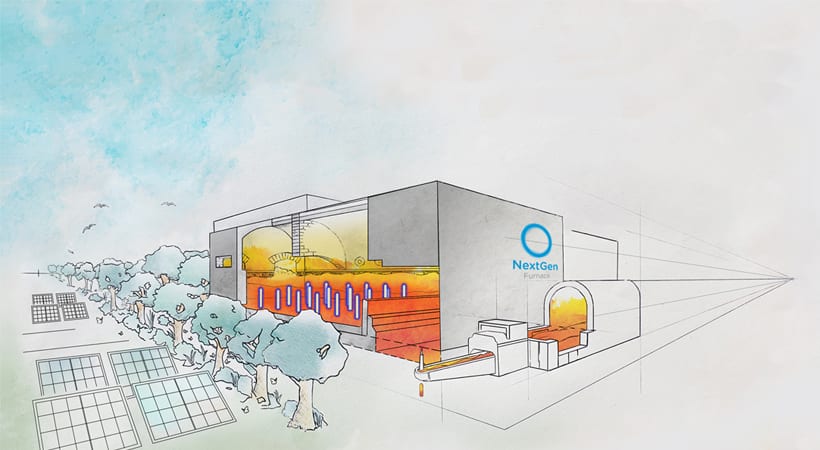
The hybrid technology will reduce CO2 emissions by as much as 60% in the furnace.

NSF invests in nine materials research centers
The U.S. National Science Foundation will invest $162 million in nine Materials Research Science and Engineering Centers to transform scientific breakthroughs into benefits for multiple sectors of the U.S. economy. The centers are Illinois Materials Research Science and Engineering Center at the University of Illinois at Urbana-Champaign; Center for Dynamics and Control of Materials at the University of Texas; University of Washington Molecular Engineering Materials Center; Northwestern University Materials Research Science and Engineering Center; Laboratory for Research on the Structure of Matter at the University of Pennsylvania; Materials Research Laboratory at the University of California, Santa Barbara; Wisconsin Materials Research Science and Engineering Center at the University of Wisconsin; Center for Advanced Materials & Manufacturing at the University of Tennessee; and Center for Materials Innovations at the University of Michigan. Each center will receive $18 million over six years.
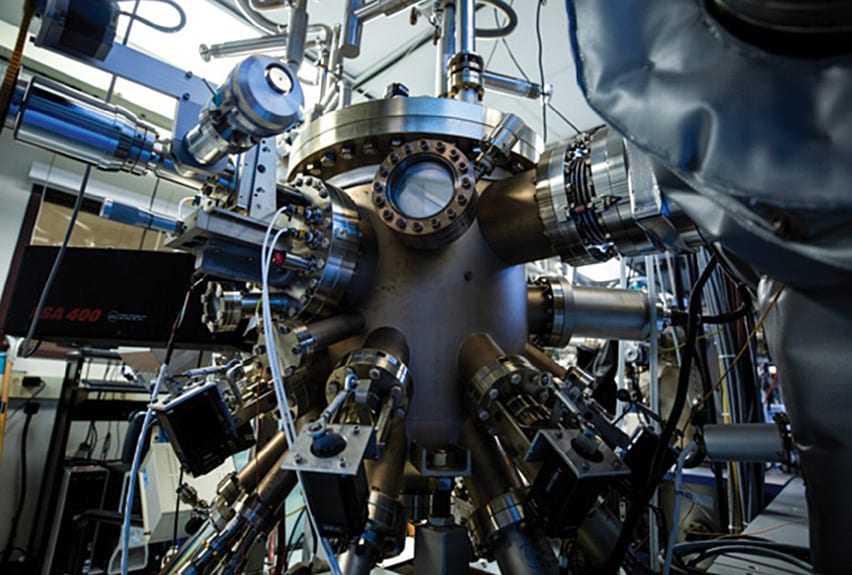
A molecular-beam epitaxy system at the University of Michigan. Credit: Evan Dougherty/Michigan Engineering

Hydro and Saint-Gobain Glass partner to decarbonize building facades
Hydro Building Systems entered into an agreement with Saint-Gobain Glass to reduce the carbon footprint of building facades in half by integrating the low-carbon solutions offered by both companies. Hydro Building Systems uses a high percentage of recycled post-consumer scrap in its aluminum facades, while Saint-Gobain Glass produces low-carbon glass products using renewable electricity and recycled content.
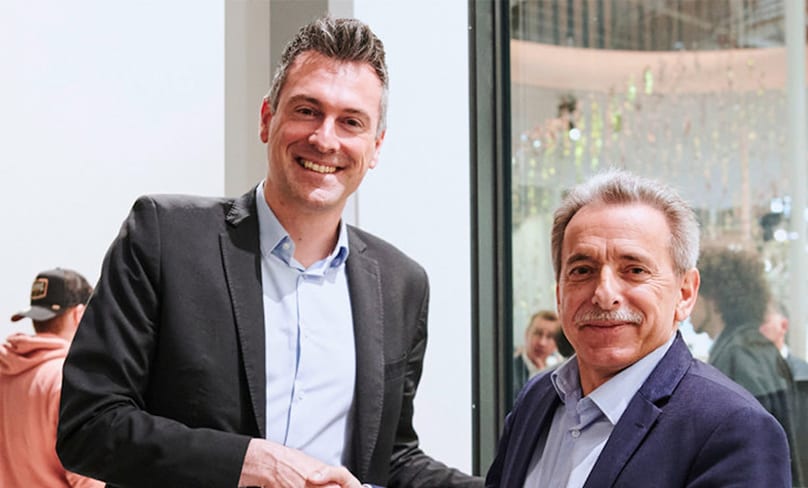
Bruno Mauvernay, left, managing director of the glass facades unit at Saint-Gobain, and Henri Gomez, vice president at Hydro Building Systems.

Research partnership examines hydrogen fuel for refractories
The U.K.-based Materials Processing Institute announced a research partnership with Trent Refractories and Swedish industrial heating technology company Kanthal to examine the impact on industrial processes of using hydrogen as an alternative fuel source. The three-year agreement will focus on the effect of hydrogen on refractories and will also test a range of electrical elements for use in high-temperature applications in a hydrogen environment.
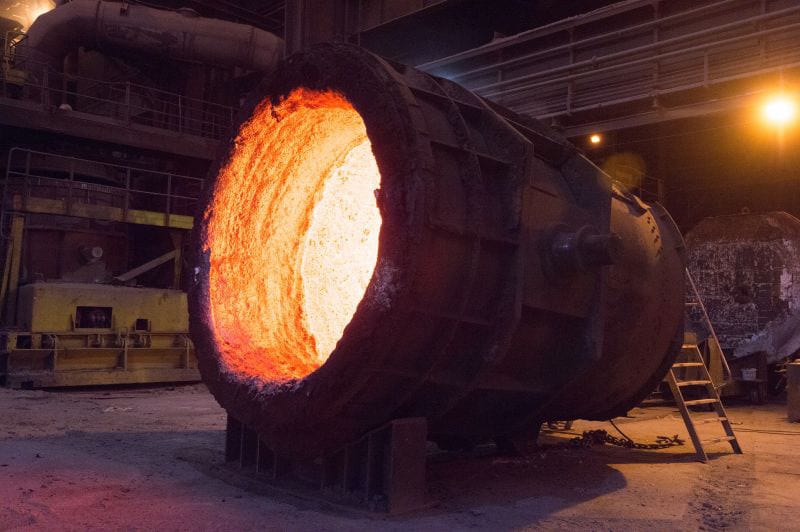
The research will examine the effect of hydrogen on heat-resistant materials that form the linings of furnaces, crucibles, kilns, and ladles.


